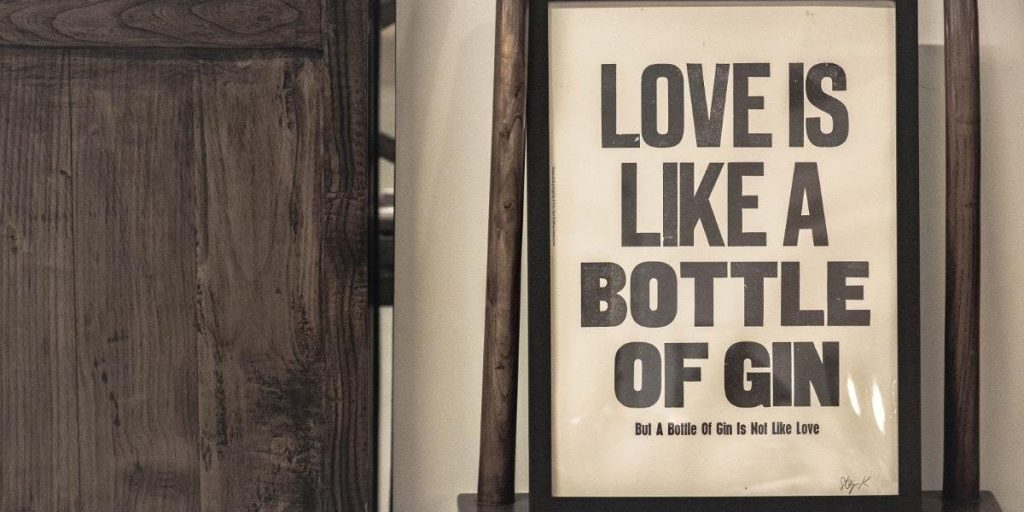Will 2020 Be the Gin Revival Decade?

Prohibition in the 1920s catapulted moonshining into a very lucrative, yet illegal business. There were moonshiners making hooch to get people drunk quickly, rotgut – containing poisonous wood alcohol, and the ever-potent bathtub gin. While it sounds horrific, Bathtub gin references poor-quality alcohol being made in the 1920s, but due to the height of the bottle used, the alcohol was topped off with water from the bathtub tap instead of the kitchen sink. The unpleasant taste of the bathtub gin made it harsh to drink and needed to be disguised, so speakeasies mixed it with sodas, fruit juices, and garnishes to give the drink a more approachable flavor. The taste of 1920s hooch, rotgut, and bathtub gin forced speakeasy bartenders to get creative, essentially paving the way for gin to be the basis of many mixed drinks being revived today.
Since the end of prohibition, gin became less popular as other spirits became more available and consumers started caring more about flavor. In the 1950s, vodka imported from Russia replaced gin in martinis, liqueurs became popular to flavor beverages in the 1970s, and around the 1990s pop culture started to influence consumers’ priorities in adult beverages. Fast forward to today: with the farm-to-table movement and local, small distilleries popping up everywhere, gin is making a comeback due to its unique qualities allowing bartenders to be creative with their drinks. According to the International Wines and Spirits Record, gin saw 8.3% global growth in 2018 over 2017, and Statista.com states that gin sales in the U.S. are expected to grow by 1.5% annually through 2023.
Why Is Gin So Popular?
This is where many expert theories differ. Some experts believe it is the versatility, others believe it’s the changes in flavors, and still others believe it is the plant-based and craft spirits trends.
As the craft movement continues, gin is a great capital-increasing spirit. Gin can be produced using the same distilling equipment as whiskey or vodka, it just needs a botanical basket added. A good, flavorful gin can then be quickly produced and marketed while distillers are aging their whiskey and bourbon, building capital to reinvest in the distillery. Small batch producers are also experimenting with gin in ways such as pink gin, like Lawless Distilling Pink Gin, and gins with more natural botanicals from basil to oranges, like Norseman Distillery’s Strawberry-Rhubarb Gin. Distillers can also reuse their whiskey and bourbon barrels to age their gin products, like Big Cypress Distillery’s Sloe Gin Liqueur.
Consumerism today is pushing plant-based lifestyles, stating that eating more plants is healthier for oneself and the planet, and noting that the plant-based lifestyle is more sustainable. Today, consumers have a meatless option for almost everything from frozen, plant-based chicken to Burger King selling a plant-based Whopper -even milk has a variety of options made from nuts.
As the plant-based lifestyle continues to spread, eating local grows with it, and consumers want to support local markets and/or eat organically. It is believed that small-batch distillers obtaining their botanicals from local growers aids the theory that the plant-based movement is also encouraging the gin movement. Not to mention that the earthy flavors from the botanicals complement the plant-based lifestyle.
Enter the Mixers
This new-age gin evolves when mixers are added. The clear liquid doesn’t compete with the color of mixers like the dark color spirits, and at the same time, the citrus, floral, and herbal notes of the gin bring out the flavors of the mixers. Not only are some bartenders going back to the basics by reviving some of the prohibition era cocktails, but they are also improving upon them by using the recipes to create more complex cocktails. The fact that no two gins are exactly the same aids bartenders’ abilities to continually innovate their cocktails with fruits, herbs, sodas, and juices to appease the consumers’ tastes.
100 years after prohibition gave us bathtub gin, New Year’s Eve 2020 is bound to bring out the gin fanatics. The Roaring 20’s is expected to be a big NYE theme this year, complete with all the classic gin cocktails. Beyond NYE, gin is expected to lead the spirits market in sales, with continued growth for the next few years. While theorists don’t expect gin to take over the U.S. like it is the UK, the peak has yet to hit. Distiller and bartender innovation along with delicious cocktails will be the key to keeping gin on top in the future. Adding some locally grown botanicals can aid in bringing in newbie gin drinkers too!
>> Be sure to check out the craft cocktail recipe posted on our social media on Friday, December 27, 2019. It’s a classic throwback to prohibition.